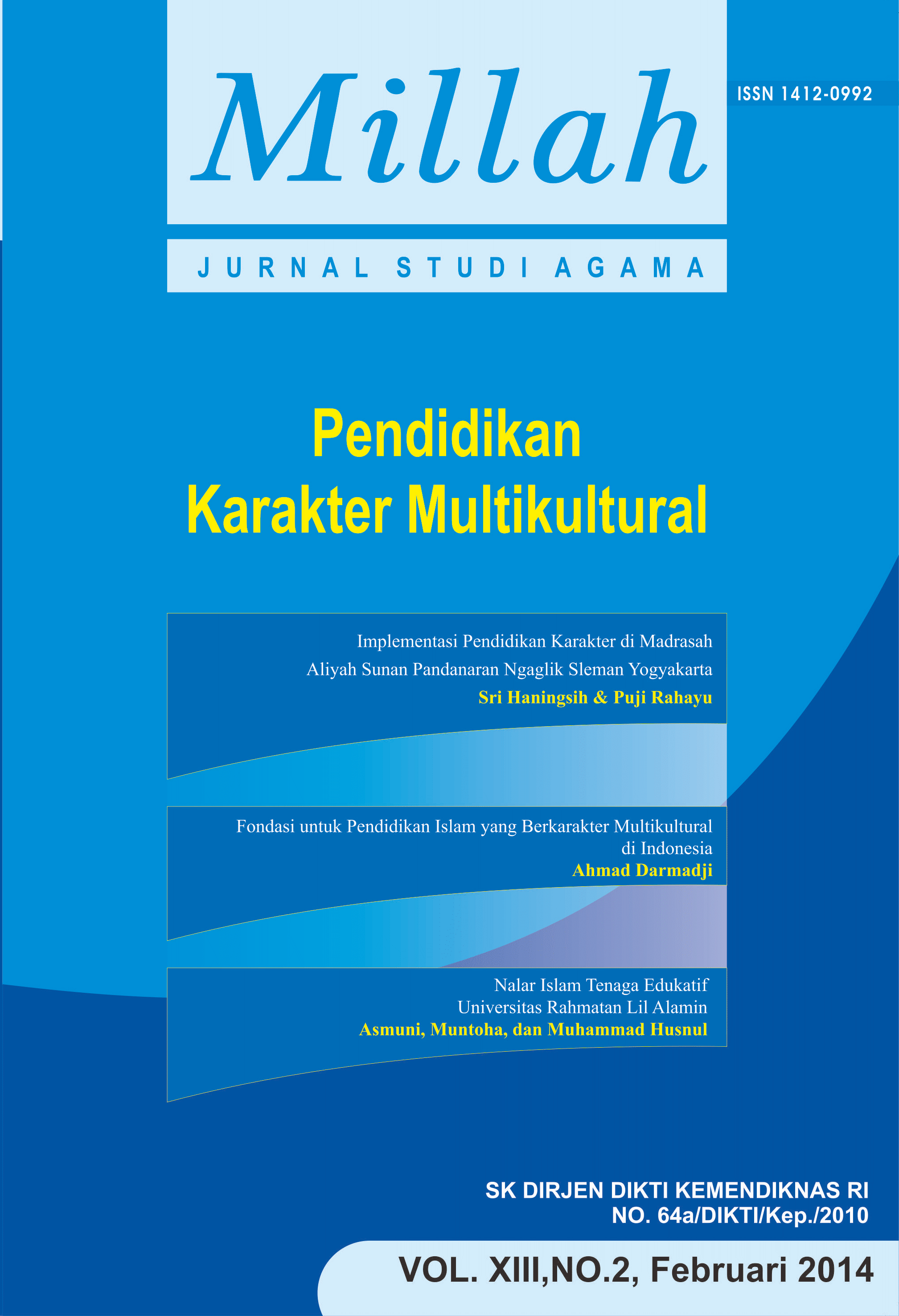Main Article Content
Abstract
This research background arouse from the problems found in the Pendidikan Agama Islam (PAI) or Islamic Education learning process in SLB Bhakti Kencana, Berbah, Sleman and in other extraordinary primary schools in general. The researchers assumed that the curriculum performed in PAI learning in the school did not suit for disabled students. The competency standards for the school are exactly the same with the standards for ordinary students. The difference between the ordinary students and mental retardation students is greatly clear, namely “IQ competence.” Collecting several aspects of that problem, the research aims at overcoming the problem by employing a strategy to optimize the instructional materials as the accomplishment of the competency standards of PAI for the mental retardation students in the first grade. The problem was formulated to answer about how to design effective instructional materials for the first-grade mental retardation students in extraordinary school. This research was conducted by applying Research and Development model. It could be concluded that the instructional materials which were fit for the students should have (a) began with easy to tough topics, concrete to abstract, simple to complex, (b) been suited to the students’ personality and ability, (c) emphasized the functional skills, and (d) been interesting. The developed module included more complete steps, so it could facilitate the students to learn. The feasibility test showed that the developed module (1) was good in the feasibility contents, (2) was good from the aspects of the language and illustration, (3) was good observed from the presentation aspect, and (4) was very good in the module layout since the module had the balance between the text and illustration, the size of the picture, the font, the interesting cover, so the students could understand the module easily.
Article Details
Copyright (c) 2016 Millah: Jurnal Studi Agama

This work is licensed under a Creative Commons Attribution-ShareAlike 4.0 International License.
Authors retain copyright and grant the journal right of first publication with the work simultaneously licensed under a Creative Commons Attribution (CC-BY-SA) 4.0 License that allows others to share the work with an acknowledgment of the work’s authorship and initial publication in this journal.




